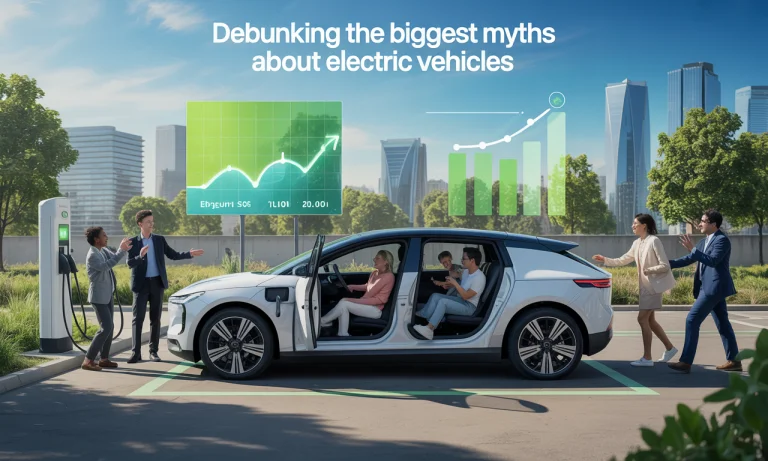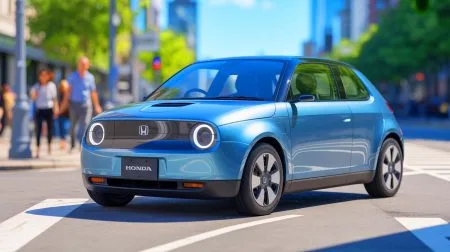Rumors, clickbait, and lively dinner table debates—when it comes to electric vehicles, misinformation travels faster than a Lucid Air on a straightaway. In 2025, with Tesla sedans quietly weaving through traffic and BYD, Ford, Nissan, Chevrolet, Volkswagen, Hyundai, Polestar, Lucid Motors, and Rivian all fighting for market share, electric cars have leapt from niche status to global presence. Still, persistent myths muddy the facts for curious new drivers and skeptics alike. Are EVs really worse for the environment? Are battery fires about to erupt? Is public charging still a mythological quest? Below, we untangle the biggest misconceptions, diving into real-world stories, data, and a few surprises about the cars shaping our roads, jobs, and future.
Electric Vehicle Environmental Impact: Separating Myth from Reality
As Jane, a journalist from Manchester, prepared to trade her aging Ford Focus for a gleaming new EV, she heard it all: “It’ll take you 77,000 miles just to break even on emissions.” Yet recent data tells a different story. A Tesla Model Y in the UK balances out its initial ‘carbon debt’ after just 13,000 miles—less than two years for most drivers. Over a full life, its emissions are about three times lower than an average petrol car. Production emissions, especially from batteries, do exist; however, as Europe’s and the world’s electric grids get cleaner, the benefits keep improving. Meanwhile, manufacturers like Volkswagen and Hyundai are pushing for greener supply chains, driving these numbers down further. The story is clear: whether you drive a Nissan Leaf, Chevrolet Bolt, or Polestar 2, the green advantage begins early and grows over time.
| Model | Break-Even Mileage (Emissions) | Lifetime CO2 Reduction vs Petrol |
|---|---|---|
| Tesla Model Y (UK) | 13,000 miles | 68% |
| Volkswagen e-Golf (EU) | 14,000 miles | 65% |
| Volvo C40 Recharge | 16,000 miles | ~70% |
Electric Grid and Charging Infrastructure: Can the System Cope?
Skeptics like to recall headlines forecasting grid collapse or a shortage of public chargers. Yet, since the UK hit 50,000 public charging points, and with global investments topping $1 trillion for future infrastructure, the landscape is shifting rapidly. Technologies like Vehicle-to-Grid (V2G) now allow EVs to stabilize the grid rather than overwhelm it. In fact, modern grids—even in coal-heavy countries—are handling the transition smoothly, aided by smarter home charging and overnight rates. Jane, now a proud Hyundai Ioniq 5 owner, charges at home most nights, waking to a full battery. And with networks from Tesla Superchargers to ChargePoint expanding fast, ‘range anxiety’ is giving way to newfound convenience.
Myths Around Cost, Maintenance, and Battery Life in Electric Cars
For many like Alex, a London rideshare driver recently switching from a diesel VW Golf to a BYD Atto 3, the biggest shock wasn’t the silence or acceleration—it was realizing his maintenance costs had plummeted. Even as headlines warn that EVs are too expensive or that their batteries are dangerously short-lived, real-world economics look different. Battery warranties from Ford, Nissan, and others stretch eight years or more. Major studies reveal 90% of EVs with 100,000 miles still have at least 90% battery capacity. And when it comes to cost, falling battery prices, incentives, and cheaper electricity mean the total cost of ownership for models like the Chevrolet Bolt or Kia EV6 is now on par—sometimes even below—that of comparable petrol vehicles. Maintenance? With 90% fewer moving parts and no oil changes, it’s no contest.
| EV Model | Typical Battery Warranty | Average Maintenance Savings (%) |
|---|---|---|
| Nissan Leaf | 8 years / 100,000 miles | ~50% |
| Chevrolet Bolt | 8 years / 100,000 miles | ~50% |
| Tesla Model 3 | 8 years / 120,000 miles | ~60% |
Performance, Range, and Practicality: Today’s EVs in the Real World
Step into the world of enthusiasts like Priya in Los Angeles, who swapped her hatchback for a Lucid Motors Air Grand Touring. The myth that EVs are slow or limited to city streets evaporates on the freeway, where her car covers 837 km (520 miles) on a single charge—more than some gasoline rivals. Whether it’s the instant torque of a Tesla Model S Plaid or the adventurous spirit of a Rivian R1T tackling unpaved trails, EVs today are as thrilling as they are practical. Data from Norway—where EVs outnumber nearly every other type—demonstrates that not only do drivers travel further each year, but range is no longer a barrier. Even in harsh winters, Hyundai and Tesla models excel, with adaptive tech ensuring drivers are rarely caught short.
Job Market, Manufacturing, and the Future of Mobility
Beneath the shift toward electric mobility lies another, less visible revolution. When Ford’s F-150 Lightning rolled off a new assembly line in Michigan, it was more than a product launch—it was a harbinger of change for millions. Contrary to dire warnings about job losses, investments from Chevrolet, Volkswagen, and Polestar are ushering in tens of thousands of new roles, from battery production to software engineering. Recent research even suggests manufacturing EVs may require more labor, at least for now, due to new assembly technologies. The UK alone is poised to add 80,000–100,000 jobs by 2030, contingent on securing manufacturing plants. As Jane tells friends skeptical of “losing jobs to robots,” it’s human adaptation and retraining—supported by industry and government—that is rewriting the workplace, not the end of employment itself.
Frequently Asked Questions: Electric Vehicle Myths Debunked
-
Do electric vehicles pollute more than gas cars due to battery production?
No. Despite higher initial emissions from battery manufacturing, EVs like the Tesla Model Y pay off their ‘carbon debt’ in one to two years, ultimately reducing lifetime emissions by 65-70% compared to petrol cars.
-
Are EVs too expensive for the average driver?
Although some models have higher upfront prices, falling battery costs, tax incentives, and much lower maintenance and fueling expenses make EVs like the BYD Dolphin or Chevrolet Bolt highly affordable over their lifespan.
-
Can EVs be used for long trips and in cold climates?
Absolutely. Models from Lucid Motors, Tesla, and Hyundai now boast 400–800 km ranges, and advanced battery management ensures reliable performance even in freezing temperatures. Norway’s high EV market share supports this with real-world data.
-
Is the charging infrastructure enough to support millions of EVs?
Yes. Rapidly expanding networks—public and private—along with home charging, now mean that finding a plug is easier than ever, with 4 million+ public chargers worldwide and thousands more coming online monthly.
-
Do EV batteries last, or will I need to replace mine every few years?
Most EV batteries are rated for 10–15 years and over 300,000 miles, with warranty support and continually improving chemistry. Less than 2% of batteries have needed early replacement in large-scale studies.
Did you like it? 4.4/5 (21)







